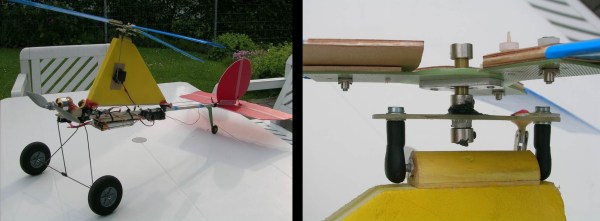[PeterSripol] has made an RC model airplane but instead of using normal wings he decided to try getting it to fly using some KFC chicken buckets instead. Two KFC buckets in the place of wings were attached to a motor which spins the buckets up to speed. With a little help from the Magnus effect this creates lift.
Many different configurations were tried to get this contraption off the ground. They eventually settled on a dual prop setup, each spinning counter to each other for forward momentum. This helped to negate the gyroscopic effect of the spinning buckets producing the lift. After many failed build-then-fly attempts they finally got it in the air. It works, albeit not to well, but it did fly and was controllable. Perhaps with a few more adjustments and a bit of trial and error someone could build a really unique RC plane using this concept.














